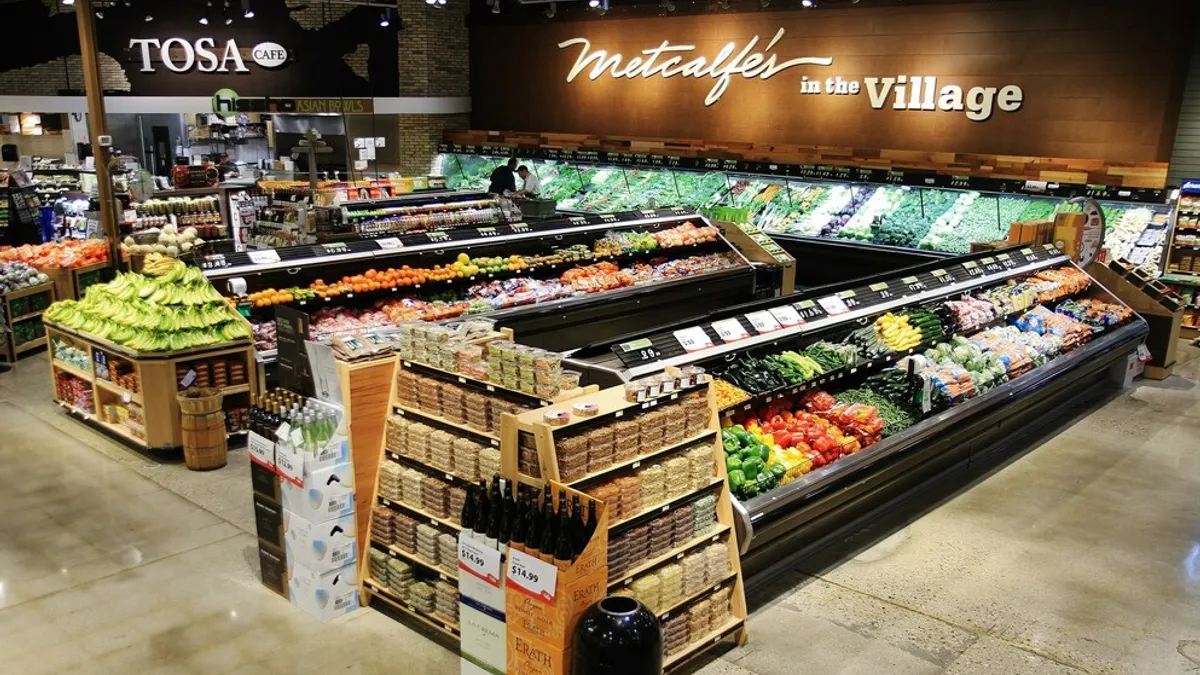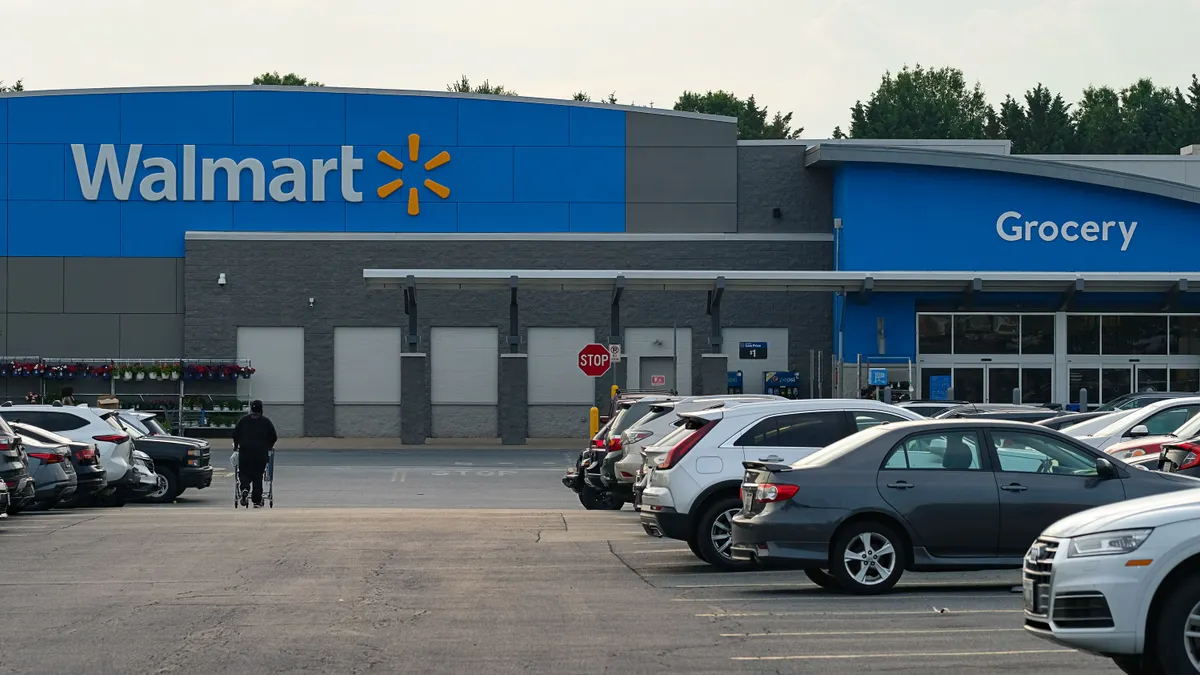Dive Brief:
- Withdrawal from the North American Free Trade Agreement could cost U.S. retailers and consumers up to $16 billion each year, and would likely mean significantly higher prices at the grocery store checkout, a A.T. Kearney study shows.
- The study says food and beverages sold at grocery stores would see the biggest hit under a NAFTA reversal, with $2.7 billion in increased costs, followed by apparel, electronics, appliances and household goods.
- Leslie G. Sarasin, president and CEO of the Food Marketing Institute stated in a news release that customers want access to affordable, high-quality produce yearround, which is partially made possible by expanded trade with Mexico and Canada and "the interconnectedness of our three economies."
Dive Insight:
Big players in the retail industry, such as the Food Marketing Institute (one of several organizations to partner with A.T. Kearney on this report) hope the Trump Administration won’t simply wipe its hands clean of NAFTA, but will instead consider the impact to U.S. jobs and to the American consumer as negotiations continue.
Should talks fall apart, shoppers can expect to see higher prices and less variety on grocers’ shelves, A.T. Kearney reported. The U.S. climate isn’t conducive to growing year-round fruits and veggies now imported from Mexico. While U.S. growers may eventually adopt crops to satisfy hungry consumers, that could take decades and still not produce the variety consumers get currently. Add in higher U.S. costs for farm labor, plus tariffs likely to raise the costs of equipment and energy both to produce foods and distribute them to supermarkets, and stateside residents can expect to pay a pretty penny for things they eat.
How much exactly? Using today's prices, In Homeland Security estimated a Kroger shopper could expect to pay more than $5 for a bag of potatoes that now costs $3, and $10.48 for a pound of steak that today rings in at $6 a pound. The A.T. Kearney report estimated that without NAFTA, the cost of one basket of fresh foods could jump 13% in winter months. With already tight margins, grocers likely cannot afford to absorb costs, and instead may pass them on to customers.
With a jump in prices, consumers are likely to pull back on the quantity or quality of foods they buy. A drop in consumer demand could lead to store closures or layoffs, already an issue as buyers turn to online outlets. The Kearney study predicted a 128,000 loss of overall retail jobs over three years if NAFTA falls apart.
Those in the agriculture and food production industries aren’t standing idly by. A diverse group of food system leaders, including the American Farm Bureau Federation, the FMI, the Grocery Manufacturers Association and even Walmart, recently formed Americans for Farmers and Families.
According to its website, the group will focus on coalition building and media campaigns in conservative-leaning states to mobilize those who support the Trump administration's policies, as well as Republican governors and lawmakers to “change perceptions about the trade agreement” and encourage them to push for renegotiation.
“Our mission is to educate policymakers on the best way to modernize NAFTA to fit America’s evolving needs,” the organization’s website reads. “Improvements to NAFTA should be pursued by policymakers to ensure fair and balanced trade with our partners that benefits American exporters, consumers and helps create and grow American jobs.”
Bending the ears of rural Trump supporters and Republican legislators may be a smart move for grocers hoping to have more say in NAFTA discussions. As the Kearney report showed, an abrupt end to NAFTA would likely bring big changes to U.S. dining rooms.






